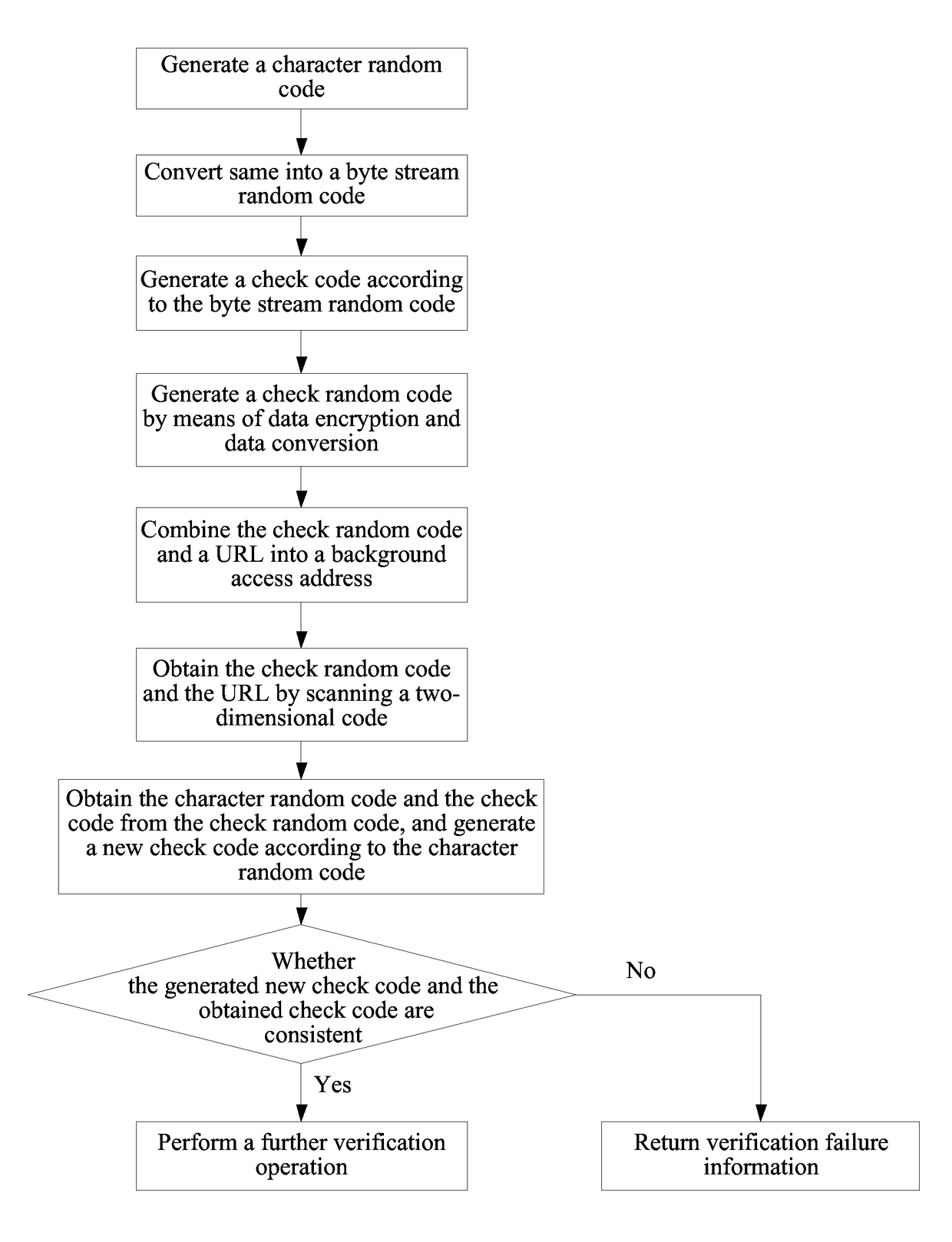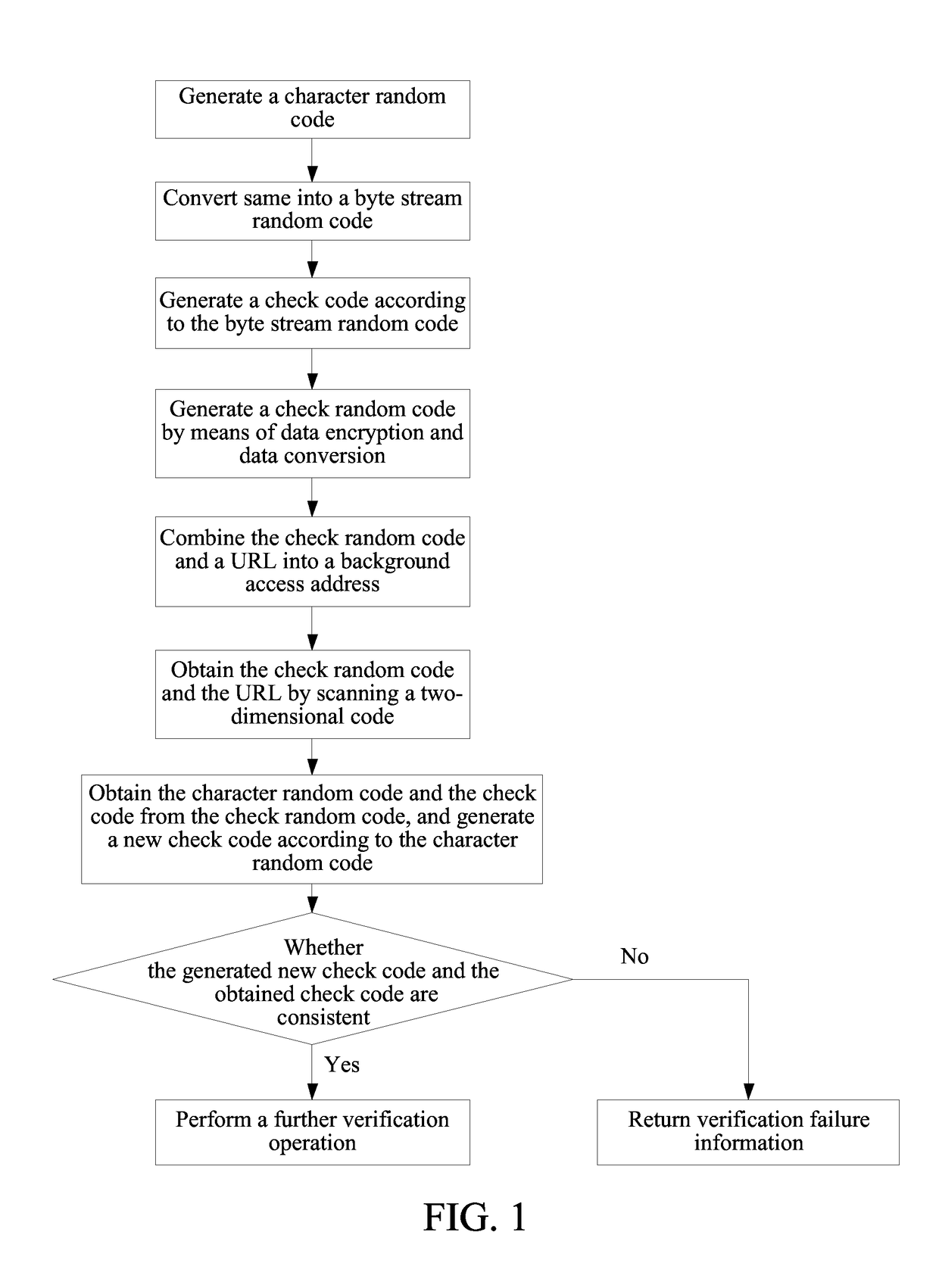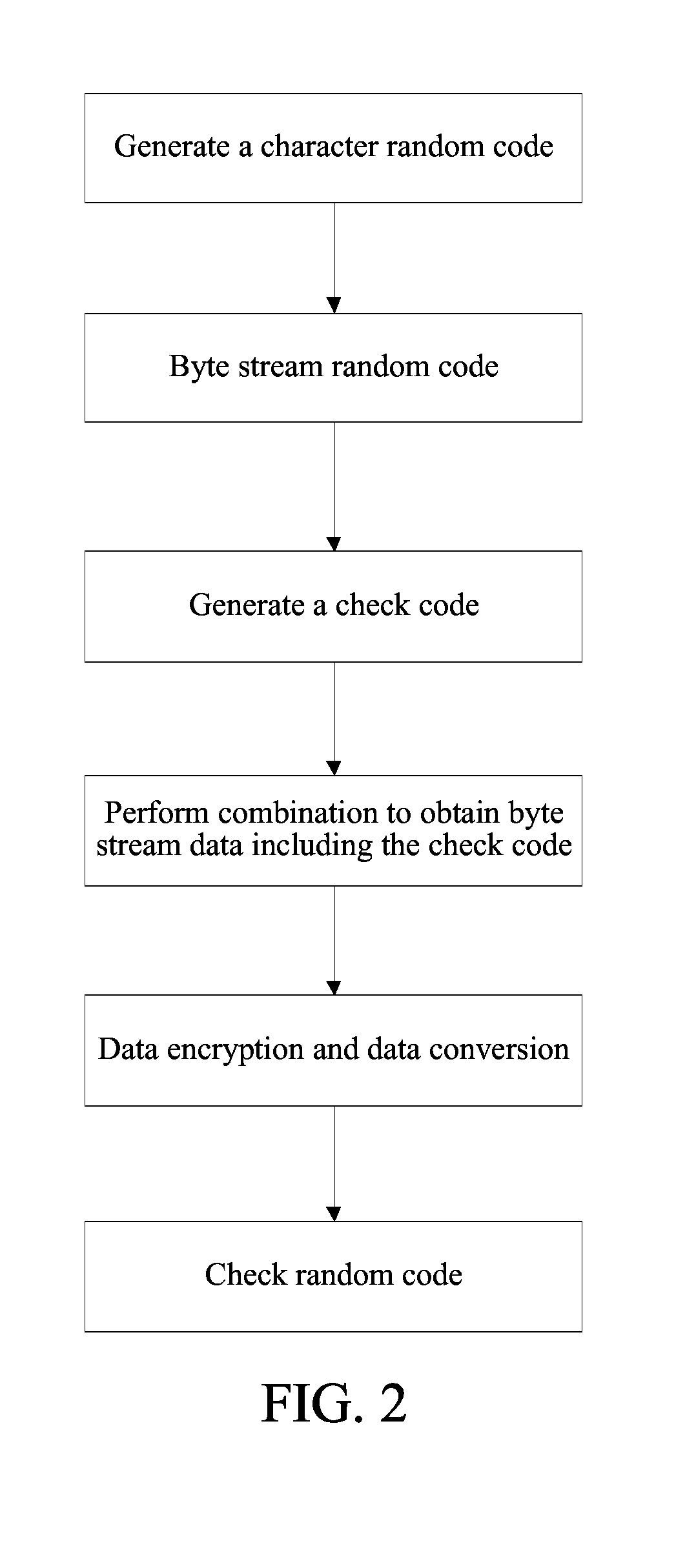Data authenticity identification method and device for safety check of two-dimensional code
- Summary
- Abstract
- Description
- Claims
- Application Information
AI Technical Summary
Benefits of technology
Problems solved by technology
Method used
Image
Examples
Embodiment Construction
[0044]The following further describes the specific technical content of the present invention in detail with reference to the accompanying drawings and specific embodiments.
[0045]To avoid a problem that a server is likely to go down because of malicious cracking of a random code by using a program and a large amount of database access caused by a simulation program, the present invention provides a novel data authenticity identification method, that is, using a check random code in a two-dimensional code. The check random code means adding a check code into a random code. After receiving the check random code, a background server analyzes whether the random code is valid by using the check code. Only when the check random code is valid, a database can be accessed again, and a random code that fails to pass the check code verification is directly returned, thereby effectively preventing the database from going down because of brute-force cracking and a large amount of access to the d...
PUM
 Login to View More
Login to View More Abstract
Description
Claims
Application Information
 Login to View More
Login to View More - R&D
- Intellectual Property
- Life Sciences
- Materials
- Tech Scout
- Unparalleled Data Quality
- Higher Quality Content
- 60% Fewer Hallucinations
Browse by: Latest US Patents, China's latest patents, Technical Efficacy Thesaurus, Application Domain, Technology Topic, Popular Technical Reports.
© 2025 PatSnap. All rights reserved.Legal|Privacy policy|Modern Slavery Act Transparency Statement|Sitemap|About US| Contact US: help@patsnap.com



